Many dog owners living in small apartments struggle to provide their furry companions with enough exercise. Without a backyard or nearby park, it can be challenging to keep dogs active and healthy. However, there are plenty of indoor exercise ideas that can help keep dogs fit and entertained, even in the smallest of spaces. Explore our guide to indoor exercise ideas for dogs in small apartments to ensure your canine friend stays happy and healthy indoors.
One option is to create an indoor obstacle course for your dog. This can be done using everyday household items, such as chairs, broomsticks, and blankets. Obstacle courses provide mental and physical stimulation for dogs, and they can be adjusted to fit the size of your apartment.
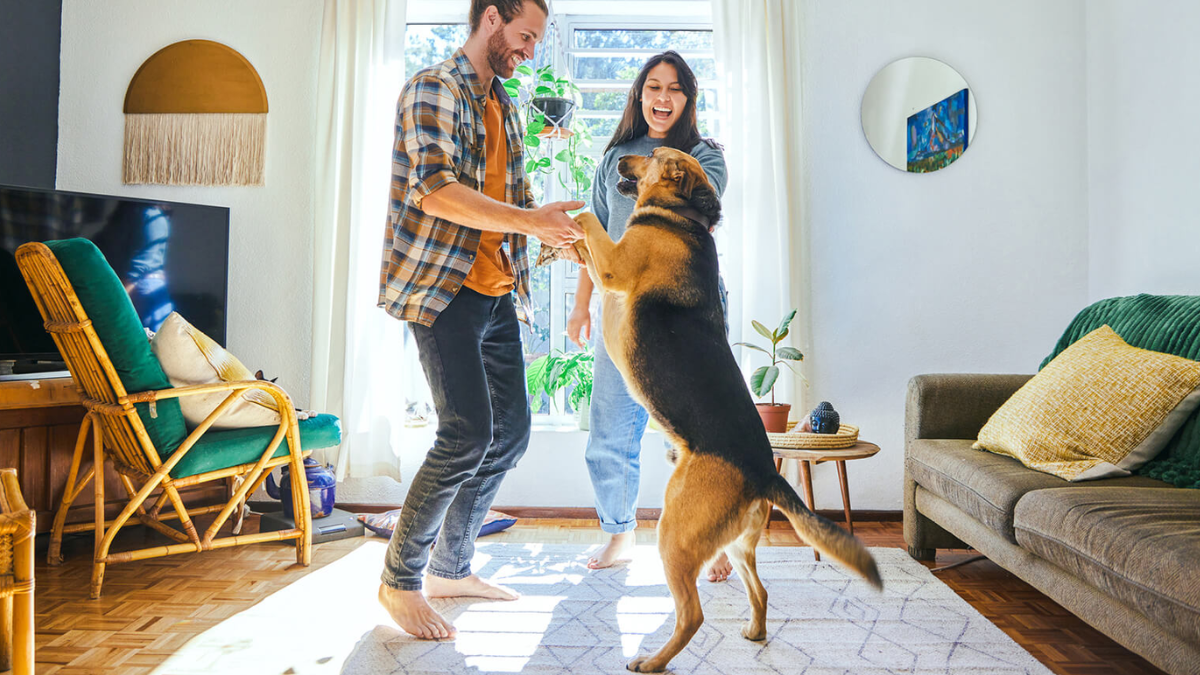
Another idea is to play hide-and-seek with your dog. This game not only gets your dog moving but also engages their sense of smell and cognitive abilities. Hide treats or toys around your apartment and encourage your dog to find them. This game can be played in any size apartment and is a fun way to bond with your furry friend.
Benefits of Indoor Exercise for Dogs
Indoor exercise for dogs in small apartments has numerous benefits that can help improve their overall health and well-being. Here are some of the key benefits of indoor exercise for dogs:
1. Mental Stimulation
Indoor exercise can provide dogs with mental stimulation, which is essential for their cognitive development. Dogs that are mentally stimulated are less likely to develop behavioral problems such as destructive chewing, excessive barking, and aggression.
2. Physical Fitness
Indoor exercise can help dogs maintain their physical fitness, even in small apartments. Regular exercise can help dogs maintain a healthy weight, build muscle, and improve their cardiovascular health.
3. Bonding
Indoor exercise can also help strengthen the bond between dogs and their owners. Activities such as playing fetch, hide and seek, and tug-of-war can be a fun way for owners to interact with their dogs and build a stronger relationship.
4. Weather Protection
Indoor exercise can protect dogs from extreme weather conditions such as heat, cold, and rain. This is particularly important for dogs that are sensitive to temperature changes or have health conditions that make them more susceptible to heat stroke or hypothermia.
In conclusion, indoor exercise for dogs in small apartments has numerous benefits that can help improve their overall health and well-being. By providing dogs with mental stimulation, physical fitness, bonding opportunities, and weather protection, owners can ensure that their furry friends are happy and healthy.

Understanding Your Dog's Exercise Needs
Dogs have different exercise needs depending on their breed, age, and size. It is essential to understand your dog's exercise requirements to provide them with the right amount of physical activity.
A general rule of thumb is that dogs need at least 30 minutes of exercise per day. However, some dogs may need more, while others may need less. For example, small breeds like Chihuahuas may only need short walks, while larger breeds like German Shepherds may require more intense exercise.
It's important to note that exercise is not just about physical activity. Mental stimulation is also crucial for a dog's overall health and well-being. Activities like puzzle toys, hide-and-seek, and training sessions can provide mental stimulation and help prevent boredom.
Additionally, it's essential to consider your dog's age and any health conditions they may have. Puppies and senior dogs may not be able to handle the same level of exercise as adult dogs. Dogs with health conditions like arthritis may require low-impact exercise options like swimming.
In summary, understanding your dog's exercise needs is crucial to providing them with the appropriate amount of physical and mental stimulation. Take into account their breed, age, size, and health conditions to create an exercise routine that works best for your furry friend.
Space-Saving Exercise Equipment
For dogs living in small apartments, space can be a major constraint when it comes to exercise. Fortunately, there are many space-saving exercise equipment options available that can help your furry friend stay fit and healthy.
Interactive Dog Toys
Interactive dog toys are a great way to keep your dog active and entertained, without taking up too much space in your apartment. These toys can range from puzzle feeders to treat dispensers to tug toys, and they are designed to keep your dog engaged and mentally stimulated.
Treadmills for Dogs
Treadmills for dogs are another great option for those living in small apartments. These treadmills are designed specifically for dogs and come in a variety of sizes and styles. They can be used to provide your dog with a low-impact workout, even when the weather outside is not ideal for outdoor exercise.
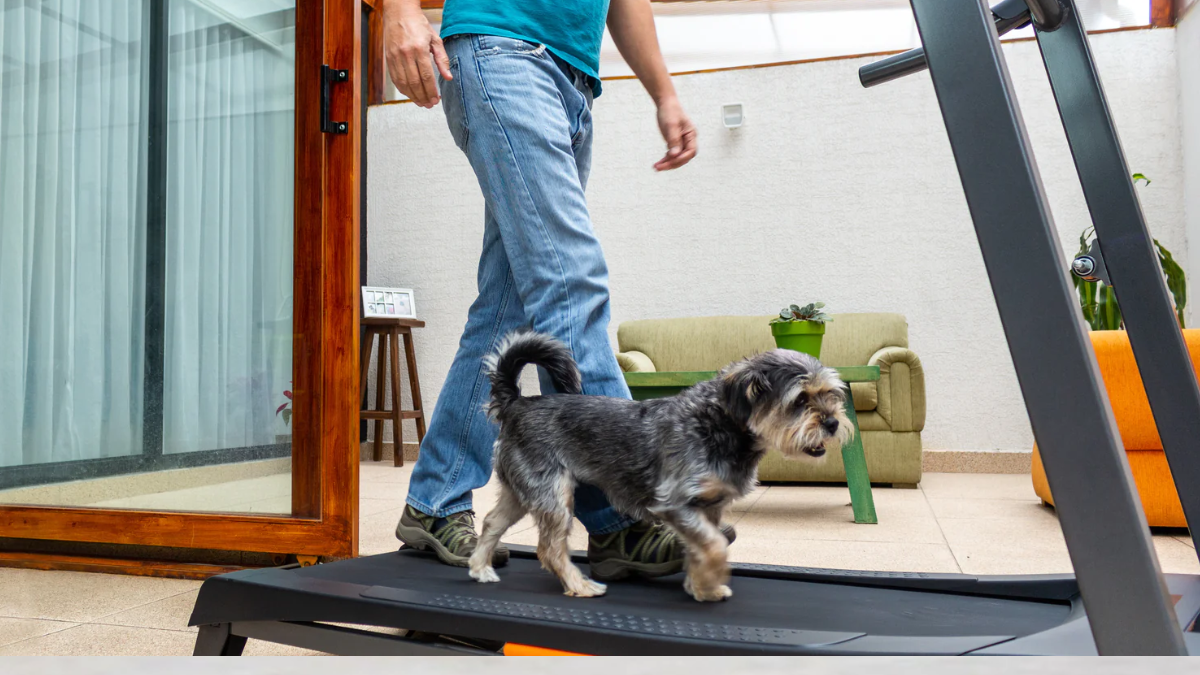
Puzzle Feeders
Puzzle feeders are a great way to provide your dog with mental stimulation and exercise at the same time. These feeders are designed to make your dog work for their food, and they come in a variety of styles and difficulty levels. Some puzzle feeders require your dog to solve a series of puzzles to access their food, while others simply require your dog to use their nose or paws to access their food.
By incorporating these space-saving exercise equipment options into your dog's routine, you can help them stay fit and healthy, even in a small apartment.
Training Exercises Within Limited Space
When living in a small apartment, it can be challenging to find enough space to exercise your dog. However, many training exercises can be done within limited space to keep your dog physically and mentally stimulated.
Obedience Training
Obedience training is an essential part of a dog's life, and it can be done in a small apartment. Dogs can learn basic commands such as sit, stay, come, and leave it. These commands can be practiced in a small space, and they help to keep your dog's mind active.
To make obedience training more interesting, owners can use treats and toys as rewards for good behavior. It is important to keep training sessions short and fun to prevent your dog from becoming bored or frustrated.
Trick Training
Trick training is another great way to exercise your dog in a small apartment. Dogs can learn a variety of tricks such as rolling over, playing dead, and shaking. Trick training can be done with minimal space and can be a fun way to bond with your dog.
Owners can use treats and positive reinforcement to encourage their dogs to learn new tricks. It is important to keep training sessions short and to reward your dog for their efforts.

Agility Training
Agility training may not be possible in a small apartment, but owners can still incorporate some agility exercises into their dog's routine. Dogs can learn to jump over objects, weave through cones, and crawl under things. These exercises can be done with minimal space and can help to keep your dog physically fit.
Owners can use treats and toys as rewards for good behavior during agility training. It is important to start with simple exercises and gradually increase the difficulty level to prevent injury to your dog.
In conclusion, many training exercises can be done within limited space to keep your dog physically and mentally stimulated. Obedience training, trick training, and agility training are all great options for dogs living in small apartments. By incorporating these exercises into your dog's routine, you can help to keep them healthy and happy.
Creative Play and Mental Stimulation
Dogs require both physical and mental exercise to stay healthy and happy. For dogs living in small apartments, it can be challenging to provide enough space for physical exercise. However, there are many creative ways to engage your dog's mind and keep them mentally stimulated.
rolling
Hide-and-seek games are a great way to provide mental stimulation for your dog. Start by hiding a treat or toy in an obvious location and encourage your dog to find it. As your dog becomes better at the game, make the hiding spots more challenging. This game not only provides mental stimulation but also helps to strengthen the bond between you and your dog.
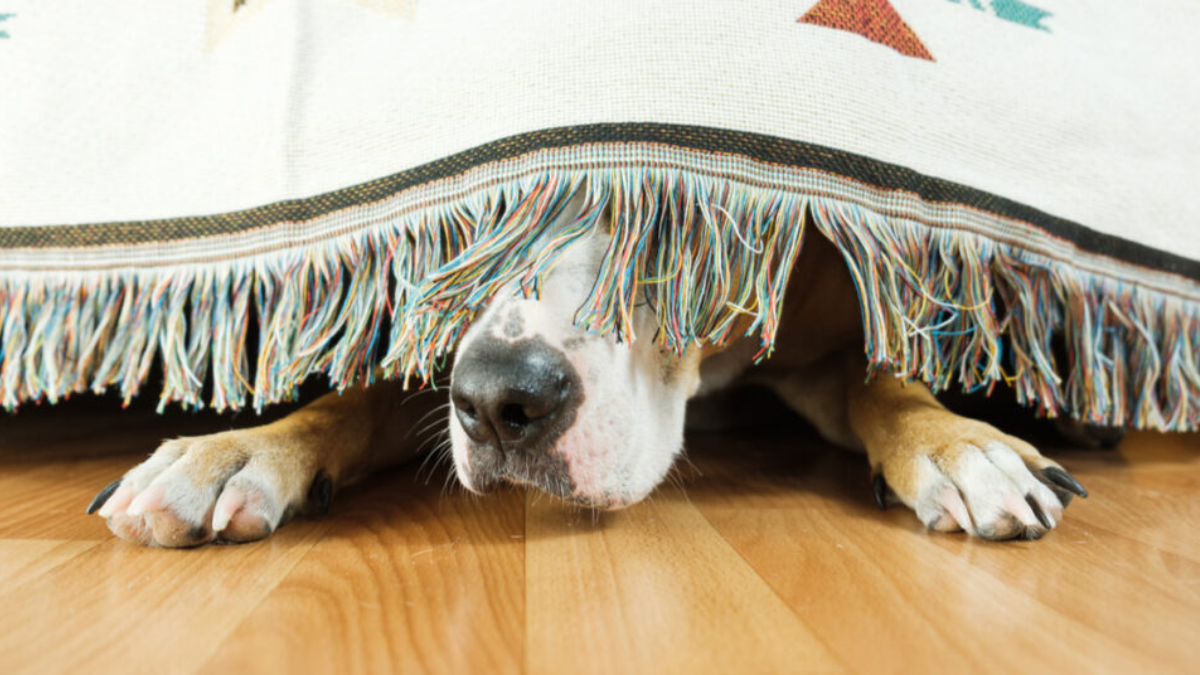
Treasure Hunts
Treasure hunts are another fun way to engage your dog's mind. Hide treats or toys around your apartment and encourage your dog to find them. You can make the game more challenging by hiding the treats in unexpected places or by using scent markers to guide your dog to the treasure.
DIY Obstacle Courses
Creating an obstacle course in your apartment is a great way to provide both physical and mental exercise for your dog. Use everyday household items like pillows, chairs, and boxes to create a course for your dog to navigate. You can also use treats or toys as rewards for completing the course.
By incorporating these creative play and mental stimulation activities into your dog's routine, you can help keep them happy and healthy, even in a small apartment.
Exercise Routines for Small Spaces
When living in a small apartment, it can be challenging to provide your furry friend with enough exercise. However, with a bit of creativity, you can still keep your dog active and healthy. Here are two exercise routines that can be done in small spaces:
Circuit Training
Circuit training is a great way to keep your dog moving while also working on obedience and focus. You can set up a series of stations around your apartment, each with a different exercise or activity. For example, one station could be "sit and stay" while another could be "weave through your legs." You can use treats or toys to motivate your dog to complete each station, and then move on to the next one. This type of exercise routine is great for dogs of all ages and fitness levels.
High-intensity interval Training (HIIT) for Dogs
HIIT is a popular exercise routine for humans, but it can also be adapted for dogs. This type of exercise involves short bursts of intense activity followed by periods of rest. You can set up a simple HIIT routine for your dog in your small apartment by using toys or treats to get them moving quickly for short bursts of time. For example, you could throw a toy down the hallway and have your dog sprint to retrieve it, then rest for a few seconds before repeating. This type of exercise routine is great for high-energy dogs who need a bit more stimulation.
Remember, it's important to tailor your dog's exercise routine to their individual needs and fitness level. Always consult with your veterinarian before starting a new exercise routine with your pet.
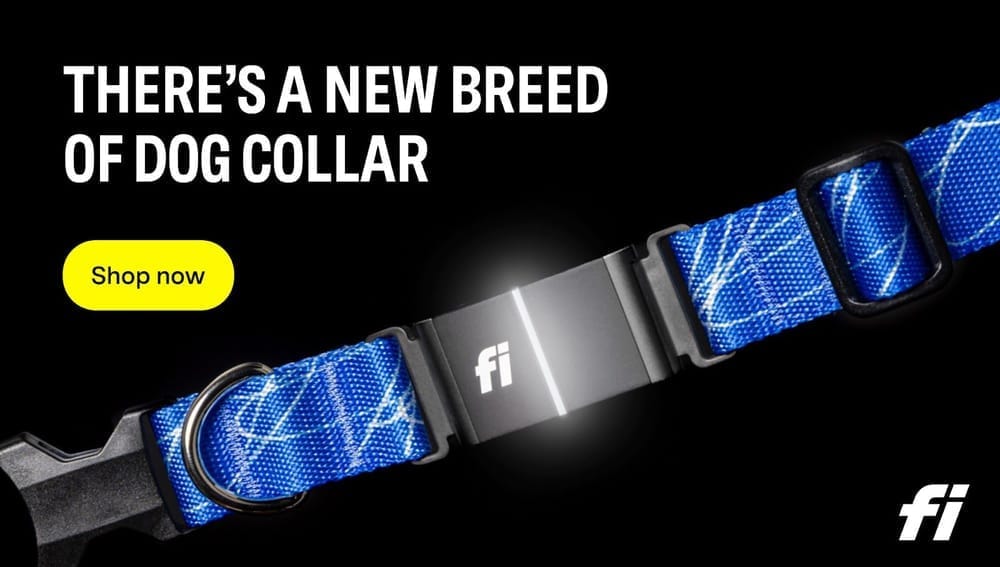
Safety Considerations for Indoor Activities
When exercising dogs indoors, it is important to ensure their safety. Here are some safety considerations to keep in mind:
1. Clear the Space
Before starting any indoor exercise activity with your dog, make sure the space is clear of any potential hazards. This includes removing any sharp or dangerous objects, as well as ensuring there is enough space for your dog to move around without bumping into anything.
2. Use Non-Slip Mats
Indoor exercise activities can be slippery, especially on hardwood or tile floors. To prevent your dog from slipping and injuring themselves, use non-slip mats or rugs in the exercise area.
3. Monitor Your Dog
Always keep an eye on your dog while they are exercising indoors. This will allow you to quickly intervene if they start to show signs of distress or become injured.
4. Avoid Overexertion
While exercise is important for dogs, it is important to avoid overexertion. This can lead to injury or exhaustion. Be sure to provide your dog with plenty of water and take breaks as needed.
5. Choose Appropriate Activities
Not all indoor exercise activities are suitable for all dogs. Some activities may be too strenuous or may not be appropriate for certain breeds. Be sure to choose activities that are appropriate for your dog's age, breed, and fitness level.
By keeping these safety considerations in mind, you can ensure that your dog stays safe while exercising indoors.
Dealing with Potential Challenges
Excessive Barking
One of the challenges of indoor exercise for dogs in small apartments is excessive barking. Dogs may bark excessively due to boredom, anxiety, or lack of stimulation. To prevent this, owners can provide their dogs with interactive toys, such as puzzle toys, to keep them engaged and mentally stimulated. Additionally, owners can schedule regular playtime with their dogs to provide them with physical exercise and attention.
Lack of Motivation
Another challenge is a lack of motivation. Dogs may become bored or disinterested in exercise if it becomes too routine or repetitive. To keep their dogs motivated, owners can mix up their exercise routines by trying new activities or incorporating different toys. Owners can also use positive reinforcement, such as treats or praise, to encourage their dogs during exercise.

Overcoming Space Limitations
The most significant challenge of indoor exercise for dogs in small apartments is space limitations. Owners can overcome this challenge by utilizing the available space efficiently. For example, owners can move furniture to create more open space, or they can use stairs or hallways for exercise. Additionally, owners can use a variety of exercise equipment, such as agility tunnels or jump bars, that are designed for indoor use and take up minimal space.
In conclusion, indoor exercise for dogs in small apartments can present some challenges, but with proper planning and creativity, owners can provide their dogs with the physical and mental stimulation they need to stay healthy and happy.
Incorporating Outdoor Elements Indoors
Dogs love to explore the outdoors, but sometimes it's not possible to take them out due to bad weather or living in a small apartment. However, there are ways to incorporate outdoor elements indoors to keep your pup entertained and active.
One way to bring the outdoors inside is to create an indoor obstacle course using household items such as chairs, pillows, and blankets. This can provide mental and physical stimulation for your dog while also improving their agility and balance. You can even set up a small tunnel made out of cardboard boxes or PVC pipes for them to crawl through.
Another way to simulate outdoor activities is through scent games. Dogs have an incredible sense of smell, and you can use this to your advantage by hiding treats around the apartment for them to find. You can also create scent trails using essential oils or spices such as cinnamon or oregano.
If your dog loves to fetch, you can play a game of indoor fetch using soft toys or balls. You can also use a laser pointer to create a fun game of chase, but make sure to never shine the laser directly into your dog's eyes.
Lastly, if you have a balcony or access to a rooftop, you can create a small outdoor space for your dog to enjoy. You can set up a small grass patch or use a potty pad to create a designated area for them to do their business. Just make sure to supervise them at all times and keep them safe from any potential hazards.
By incorporating outdoor elements indoors, you can keep your dog active and entertained even in a small apartment.
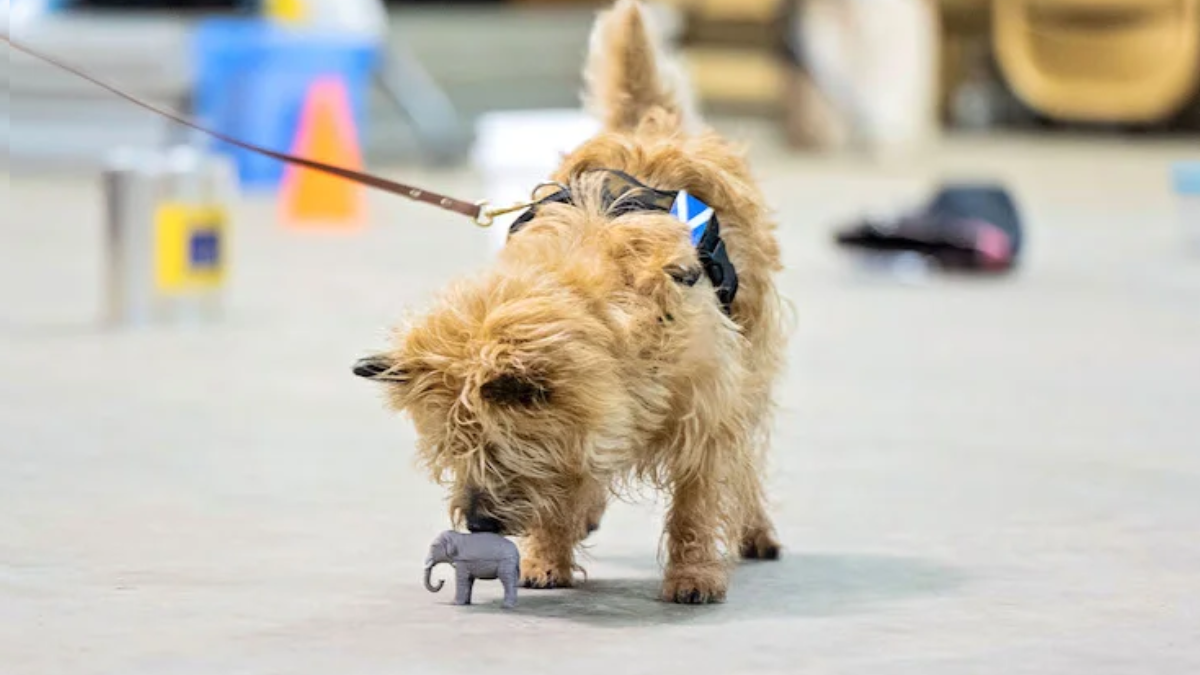
Resources for Further Information
For dog owners who want to learn more about indoor exercise ideas for their furry friends, there are plenty of resources available online. Here are a few websites that offer helpful information:
- The American Kennel Club (AKC): The AKC offers a variety of resources for dog owners, including articles on indoor exercise ideas for dogs. Their website also includes a directory of dog trainers and training facilities across the United States.
- The Association of Professional Dog Trainers (APDT): The APDT is a professional organization for dog trainers and behaviorists. Their website includes a directory of certified trainers, as well as articles and resources on dog training and behavior.
- The Humane Society of the United States (HSUS): The HSUS is a national organization that advocates for animal welfare. Their website includes articles on dog care and training, as well as a directory of animal shelters and rescue organizations.
- The Whole Dog Journal: The Whole Dog Journal is a monthly publication that offers advice on dog care and training. Their website includes articles on indoor exercise ideas for dogs, as well as product reviews and training tips.
In addition to these resources, dog owners may also want to consider consulting with a professional dog trainer or behaviorist for personalized advice on indoor exercise ideas for their specific dog.
Conclusion:
In conclusion, implementing indoor exercise ideas for dogs in small apartments is essential for maintaining their physical and mental well-being. By prioritizing their activity levels despite space constraints, you can ensure a happy and healthy lifestyle for your furry friend. Incorporating activities like indoor fetch, puzzle toys, agility training, and interactive games not only keeps them physically fit but also stimulates their minds. Additionally, regular walks and visits to dog-friendly indoor spaces provide opportunities for socialization and exploration.
Remember to tailor the activities to your dog's breed, age, and energy level to ensure they stay engaged and avoid boredom. With dedication and creativity, you can effectively meet your dog's exercise needs within the confines of your apartment, strengthening the bond between you and your canine companion. By consistently implementing these indoor exercise ideas, you can provide a fulfilling and enriching environment for your dog, promoting their overall health and happiness for years to come.




